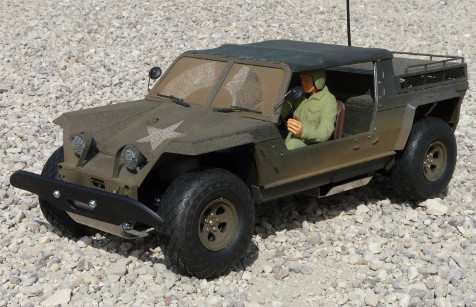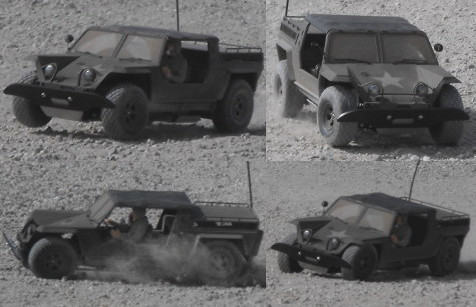The first platform
Tamiya offers their first off-road RC vehicle as soon as 1977, one year after the release of their very first RC model. The 4th model released by Tamiya is the XR311 Combat Support Vehicle: it is the first of many off-roaders to be released during the eighties. Only one other model uses this platform: the kit 58007 Lamborghini Cheetah.
58007 Lamborghini Cheetah (1978)
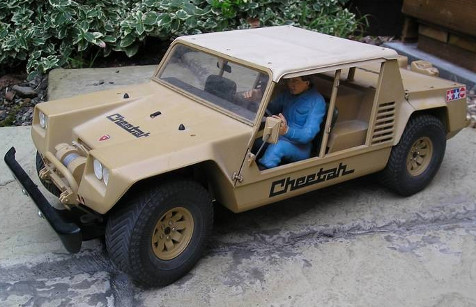
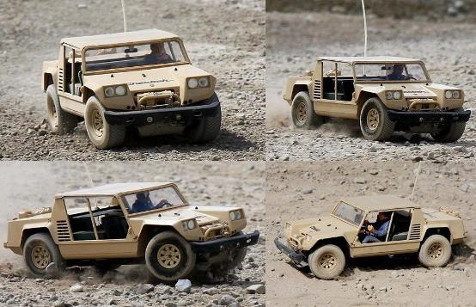
XR311 boxart
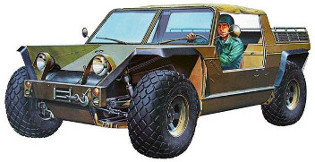
XR311 gearbox
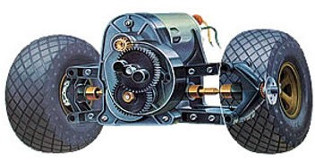
XR311 re-released chassis
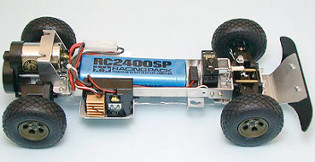
XR311 original chassis
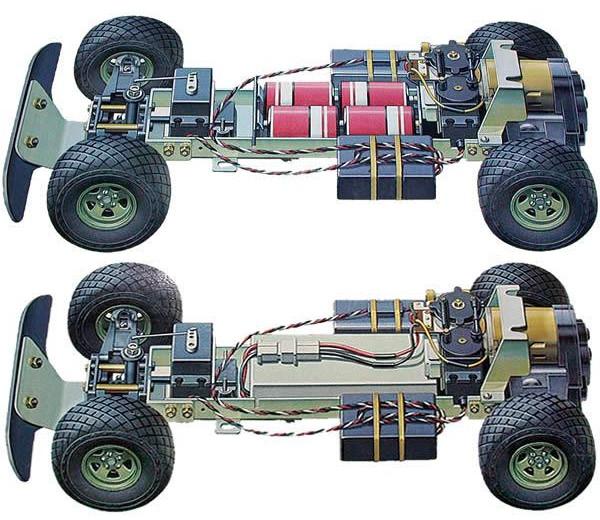
These two models have identical chassis, expect a slightly longer wheelbase for the Cheetah. Both are authentic models in motion: bodyshells are highly detailed, to the point that models being run rarely keep all elements, especially the prominent rear view mirrors. However, unlike the first on-road models, the bodyshells used by these two models were not borrowed from the 1/12 “Big Scale” series. To be true, I could not find any track of them in any series of products, even at a different scale: the obvious conclusion is that they were purposefully made for these specific models.
It is worth to mention that Tamiya's love for accuracy could not be fulfilled with this chassis since the two vehicles these models replicate are 4WD, not 2WD like the RC models. The late 70's were the beginnings of electric RC and the period technology probably didn't allow such a complex transmission yet. The same applies to suspension since the RC models use horizontal torsion bars located underneath the chassis when real-size vehicles used dampers at the 4 wheels.
Here are two videos of Tamiya's first off-road models: the first one is the period promotional video. The second is a fantastic movie by TamOR, a Tamiyaclub member. Sorry, I had to remove the great sound track on TamOR's video for a stupid question of rights: it's a shame, but I can't help it.
Promotional video from 1976-1977 (© Tamiya)
TamOR's Lamborghini Cheetah (© TamOR)
The XR311 Combat Support Vehicle is the only one among these two to have been re-released in limited series twice in 2000 and 2011, but it is still a rare model and spare parts are rare too. It is a privilege to still watch such great models running after about 40 years.
It is worth to mention that the XR311 (and the Cheetah) drive with a very realistic manner, not only because of the highly-detailed bodyshells that contribute to the scale-realism. Despite the torsion bars, suspension works amazingly: TamOR's video shows this to the perfection.To renew with such a soft and realistic suspension on a Tamiya model, 10 years will pass until the Avante release in 1988.
Conclusion on the first off-road platform
The most interesting aspect here is that Tamiya heavily invested in design and production tools to make the unique bodyshells for their two first off-road models, 1 year only after releasing their very first RC Car. Even if that car sold tremendously well at the time.
On many aspects, the XR311 is very important for Tamiya: it is a military vehicle, one very developed static models market in which Tamiya is already a leader. Furthermore, the XR311 is a model in motion, not a buggy: indeed, it is probably the first ever “scale” model in RC history (I'm referring to what is now called “scale trail”). These two parameters put together explain why the XR311 (and the Cheetah) did not sell very well, both at the time and when the XR311 was re-released. Here comes the question: why the XR311? Why re-releasing again and again that one model that does not sell well?
Well, the XR311 is just the best “bridge” Tamiya has ever created between the static and RC series (the Fast Attack Vehicle and others are too: we will see this further on). Figure it out: take the theme that sells best in the static model market, add a RC chassis underneath and you get the XR311. Above all, the result will be of much interest for military static model fans who will “discover” RC models. In addition, but to a much lower extend, you will show RC customers something of the military scale models. As of 1977, this was made to attract Tamiya's military static huge customer base to the new-born RC: as it seems, it worked quite well. The XR311 2000 and 2011 re-releases serve the exact same purpose: on the current RC market, the XR311 is pretty much an UFO since it does not belong to any existing category and it is so fragile that it is not suited for anything actually. This explains the low sales, however, the XR311 periodically rings a bell to the vast community of military static fans.
Related articles:




